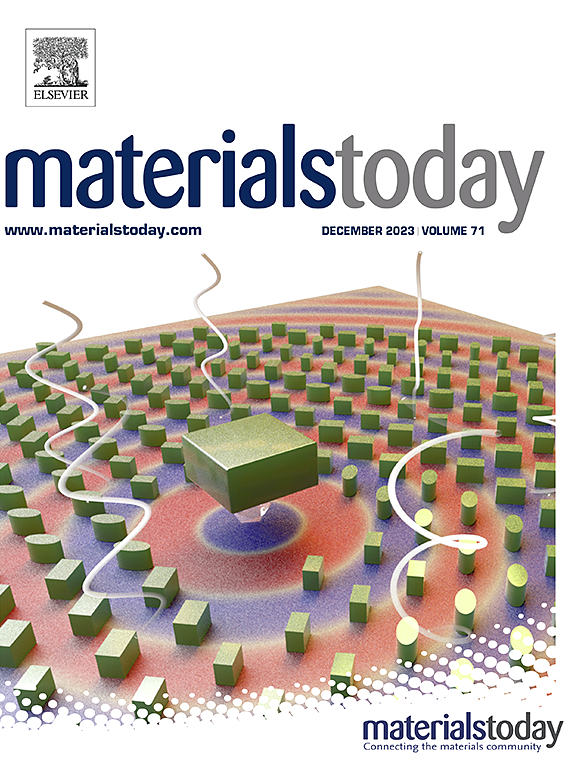通过催化诱导富liff间相延缓高压下CO2的演化
IF 21.1
1区 材料科学
Q1 MATERIALS SCIENCE, MULTIDISCIPLINARY
引用次数: 0
摘要
将LiCoO2 (LCO)充电到更高的电压可以提高高能量密度电池的可交付容量,同时钴(Co)的催化活性也在上升,不可避免地会引发电解质分解。阴极电解质界面相(CEI)的稳定性和鲁棒性对于在阴极和电解质之间建立物理隔离至关重要,有望缓解包括电解质分解在内的界面副反应。在这里,我们提出了一种催化诱导策略,选择性地吸附PF6-,以优先形成富liff的CEI。同时,对于裸LCO,我们也发现了在高压下碳酸乙烯(EC)的不可控分解,导致CO2释放,严重扰乱了CEI。相应地,y修饰的LCO阴极在10℃下具有119 mAh g−1的可逆容量,在1℃下循环100次后的容量保留率为93.12%,远远优于原始LCO的62.30%。这项工作明确地揭示了界面修饰的潜力,以调节高压电池中的CEI化学物质。本文章由计算机程序翻译,如有差异,请以英文原文为准。

Stalling CO2 evolution at high voltage by a catalytically induced LiF-rich interphase
Charging LiCoO2 (LCO) to a higher voltage could increase deliverable capacity for higher energy density batteries while the catalytic activity of Cobalt (Co) is also rising, inevitably triggering electrolyte decomposition. Stable and robust cathode electrolyte interphase (CEI) is critical to creating physical isolation between cathode and electrolyte, hopefully relieving the interfacial side reaction including electrolyte decomposition. Here, we propose a catalytically induced strategy in yttrium-based interphase that selectively adsorbs PF6- for the preferential formation of LiF-rich CEI. Meanwhile, for bare LCO, we also reveal the uncontrolled decomposition of ethylene carbonate (EC) at high voltage, resulting in CO2 release to seriously disorder CEI. Correspondingly, along with constructing a robust LiF-rich CEI and in turn inhibiting CO2 release, the Y-modified LCO cathode exhibits a reversible capacity of 119 mAh g−1 at 10 C and capacity retention of 93.12 % after 100 cycles at 1 C, which is much better than 62.30 % for the pristine LCO with serve electrolyte decomposition. This work unequivocally sheds light on the potential of interfacial modification to regulate the CEI chemistries in high-voltage batteries.
求助全文
通过发布文献求助,成功后即可免费获取论文全文。
去求助
来源期刊

Materials Today
工程技术-材料科学:综合
CiteScore
36.30
自引率
1.20%
发文量
237
审稿时长
23 days
期刊介绍:
Materials Today is the leading journal in the Materials Today family, focusing on the latest and most impactful work in the materials science community. With a reputation for excellence in news and reviews, the journal has now expanded its coverage to include original research and aims to be at the forefront of the field.
We welcome comprehensive articles, short communications, and review articles from established leaders in the rapidly evolving fields of materials science and related disciplines. We strive to provide authors with rigorous peer review, fast publication, and maximum exposure for their work. While we only accept the most significant manuscripts, our speedy evaluation process ensures that there are no unnecessary publication delays.
 求助内容:
求助内容: 应助结果提醒方式:
应助结果提醒方式:


